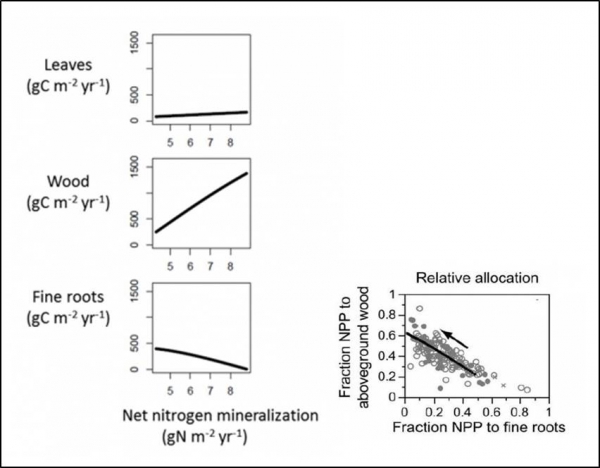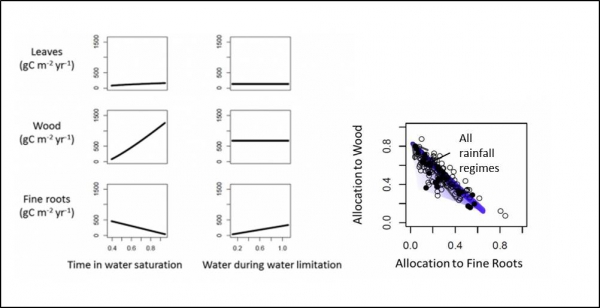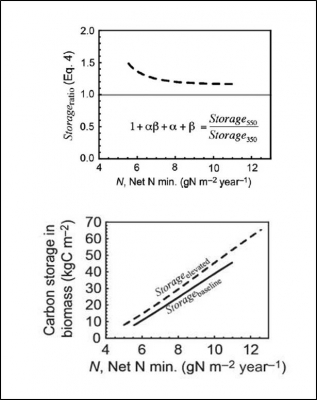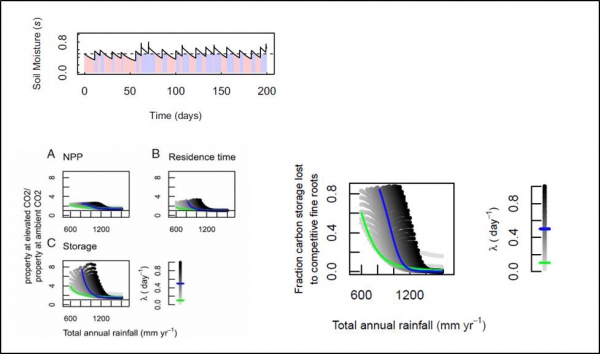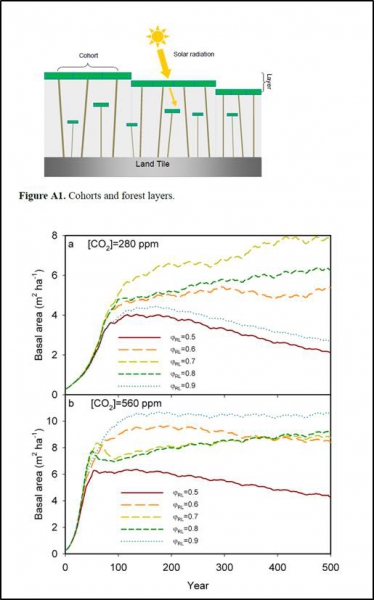Carbon allocation in forests
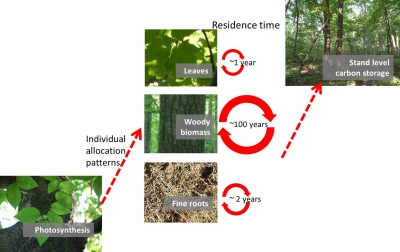 Current estimates show that plants have been taking up about ¼ of the molecules we have been emitting into the atmosphere through fossil fuel burning and deforestation. That is, they are providing an important buffer on the rate of increasing atmospheric CO2. In the future however, climate modelers and ecologists are not sure whether we will be able to continue to rely on this buffer, or whether plants communities will simply fill up and no longer accept additional CO2. Predicting the behavior of plants in novel environments - where CO2, temperature, season length, and rainfall regimes are all changing requires mechanistic understanding. Experiments and observations generally agree on qualitative responses of plants to added CO2 at the leaf level. But greater photosynthetic efficiency does not always translate into greater forest carbon storage. One important complication are potential changes in allocation strategy. Because different plant tissues have very different residence times (right), changes in allocation strategy following added CO2 can have major influences on carbon storage.
Current estimates show that plants have been taking up about ¼ of the molecules we have been emitting into the atmosphere through fossil fuel burning and deforestation. That is, they are providing an important buffer on the rate of increasing atmospheric CO2. In the future however, climate modelers and ecologists are not sure whether we will be able to continue to rely on this buffer, or whether plants communities will simply fill up and no longer accept additional CO2. Predicting the behavior of plants in novel environments - where CO2, temperature, season length, and rainfall regimes are all changing requires mechanistic understanding. Experiments and observations generally agree on qualitative responses of plants to added CO2 at the leaf level. But greater photosynthetic efficiency does not always translate into greater forest carbon storage. One important complication are potential changes in allocation strategy. Because different plant tissues have very different residence times (right), changes in allocation strategy following added CO2 can have major influences on carbon storage.
To better understand and predict the role of forests in the global carbon cycle, we have worked to understand plant allocation strategies and their responses to elevated atmospheric CO2.

In Dybzinski et al. (2011) and Farrior et al. (2013), we show that because allocation to wood and fine-roots can both be described as competitive overinvestments of plants, they are predicted to be the dominant axes of variation across forests of differing resource availability. This matches global databases of forest allocation patterns (right and below, data from Luyssaert et al. 2007).
|
Evolutionarily stable strategy carbon allocation to foliage, wood, and fine roots in trees competing for light and nitrogen. An analytically tractable, individual-based model and quantitative comparisons to data. Predicted allocation strategies across a nitrogen availability gradient (left) and in comparison with forests from around the world (right). |
|
Competition for water and light in closed-canopy forests. Predicted allocation strategies across water availability gradients (left). More time in water saturation releases plants from competition for water - increasing allocation to wood and decreasing fine roots. More water during water limitation increases the intensity of competition for water, increasing allocation to fine roots alone. Both axes make determine the envelope of predictions across all rainfall regimes (purple, right). |
|
Increased forest carbon storage with increased atmospheric CO2 despite nitrogen limitation. A game-theoretic allocation model for trees in competition for nitrogen and light. |
|
Decreased water limitation under elevated CO2 amplifies potential for forest carbon sinks. A model of tree allocation strategies under competition for water and light in continuously varying soil moisture. Rainfall arrives as a marked Poisson process with frequency, λ. Periods of water limitation are marked in red (top) for one sample time series of soil moisture. The amount of time in water limitation is influenced by rainfall and plant allocation strategy. Allocation to fine roots matches the productivity from these periods. |
|
Scaling from individual trees to forests in an Earth system modeling framework using a mathematically tractable model of height-structured competition LM3-PPA
|
